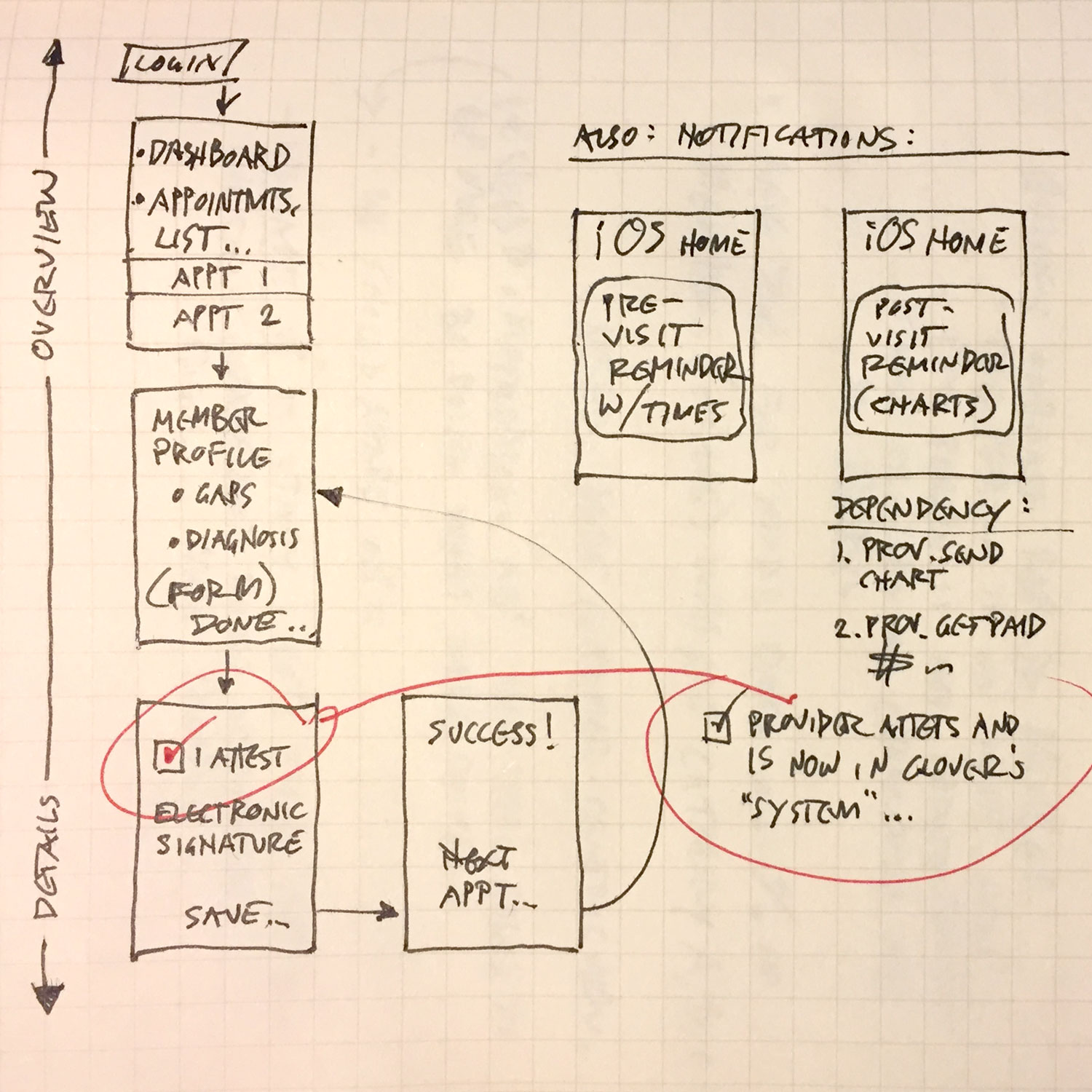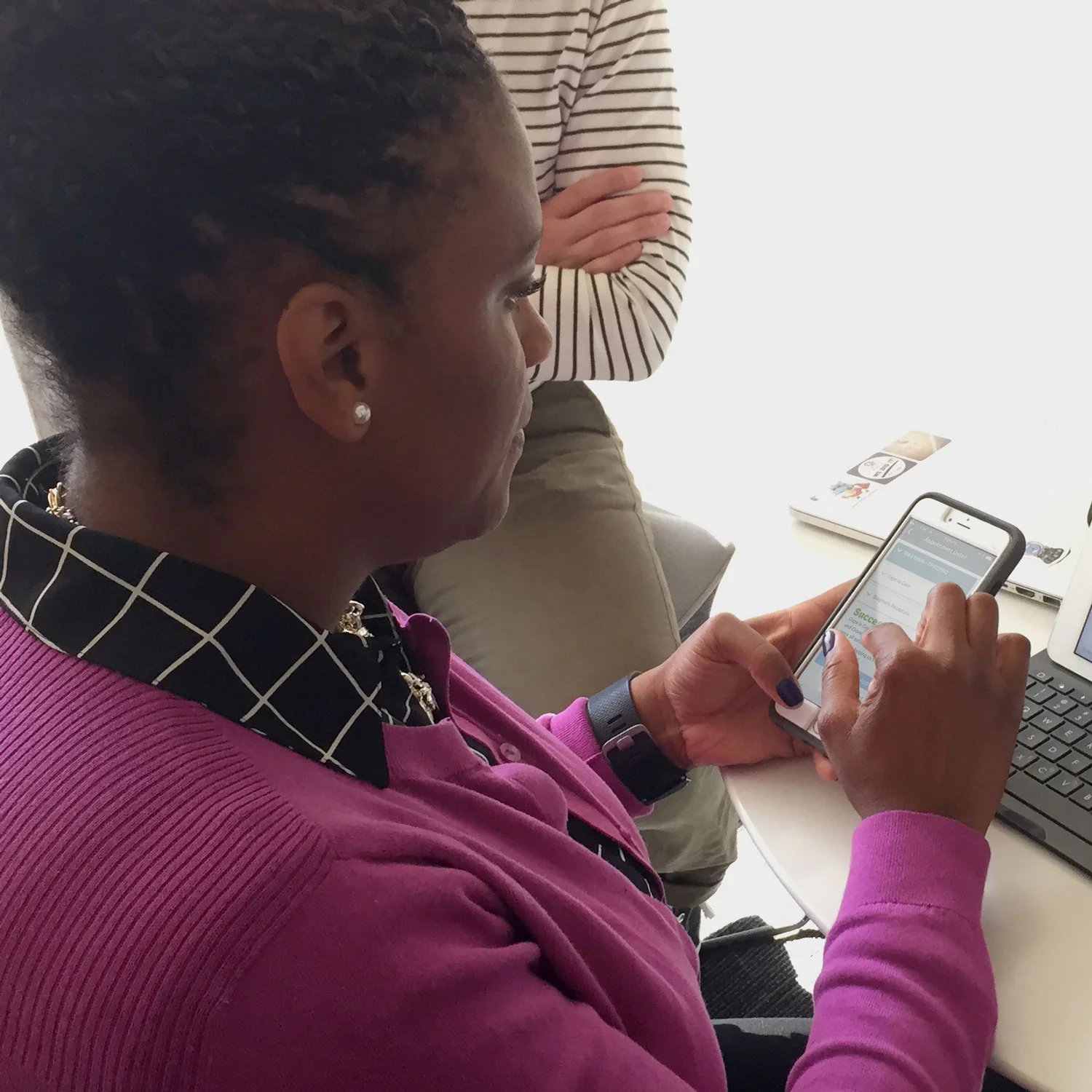
Hack-day Provider App
A hack-day app to increase accuracy, efficiency and convenience for doctors. Scope: managing appointments; diagnosis; fixing gaps; member attribution.
My role: Design Lead, User Research, Information Architecture, Mobile Design (iOS), Prototyping, UX, UI, Visual Design

Objective
Clover Health is a startup that uses data, technology and a mobile team of nurses to keep its members healthy.
Clover offers providers: integrated real time EMRs; dedicated account managers; better benefits for patients; and pays more.
The idea for an app that reduces friction for Providers, came about at a hack day. (One of the highlights of working at Clover are the hack days; people split into teams and plunge into "quick win" projects.)
No doctor likes to think of an insurance company as the entity that sits between them and their patients. But if an app actually helped doctors get paid faster, while improving their ability to provide healthier outcomes, they might start to think of that insurance company as a valued partner.

Challenges
The problem we're solving:
Providers that work with Clover often hit obstacles attributing members as being under their care. The fallout is that doctors don't get paid in time, or at the right address.
This delay can also impacts member health. Reasons for the friction include: the data isn't centralized; inability to track issues; team handoffs are not aligned; and more.
Identifying the right "target-providers" would require in-depth research, and developing personas. Unfortunately, this was out of scope for a two-day hackathon.


Approach & Process
Hypotheses:
A mobile app could potentially address the above challenges in course of the provider's normal workflow — during or after in-office visits. And it could give Clover an advantage that large, traditional insurers aren’t nimble enough to attempt.
Such a solution would also create a new touchpoint for data collection, while reducing the need for providers to call in to fix member-attribution and/or payment issues.
The problem was complex but having a small, knowledgeable team (VP/provider relations, a few engineers, an ops person, a few nurses, and a design lead), enabled us to dive “just deep enough” to grasp the requirements.
After an intense first day of white-boarding and brainstorming, we came together to build a prototype. To save time, I went directly from whiteboard and notebook sketches to high-fidelity comps and prototyping.
The concepts of this mobile context and empowering providers to help themselves allowed us to get beyond "traditional" healthcare approaches, and reimagine provider-insurer interactions in a new way.


After two days we had an iPhone app (Flinto) prototype of the core flow (no real data): The app reminds the doctor of today’s Clover member appointments...

After logging in, providers select a member and record gaps and diagnoses (either during/after the in-office visit)...

After recording gaps and doing diagnoses recapture, the app nudges them to "attest" (via checkbox and electronic signature) that they’re the doctor for this Clover member. This is a key action since it puts the provider into the system to allow them to get paid...

Once provider-member attribution is complete, the success message tells the provider that they just completed filling gaps in care and/or diagnosis recapture — as well as helping themselves to get paid faster.

Result
We got further than we thought we would in a two-day hackathon: We succeeded in communicating the value for Clover, its providers and members. Sharing this at hack-day garnered a lot of positive feedback.
After hack day, the prototype was used by our VP of Provider Relations to solicit interest and advice from selected doctors.
We demonstrated one way that providers could help scale the ecosystem — beyond the "Mission Control" admin tool that phone reps use — and beyond the iPad App that our nurses use for in-home care.
The potential for healthcare apps is immense (prevention, diagnosis, examination, EMRs, scheduling). This was a good "first attempt" — scratching the surface in a two-day hack-a-thon.